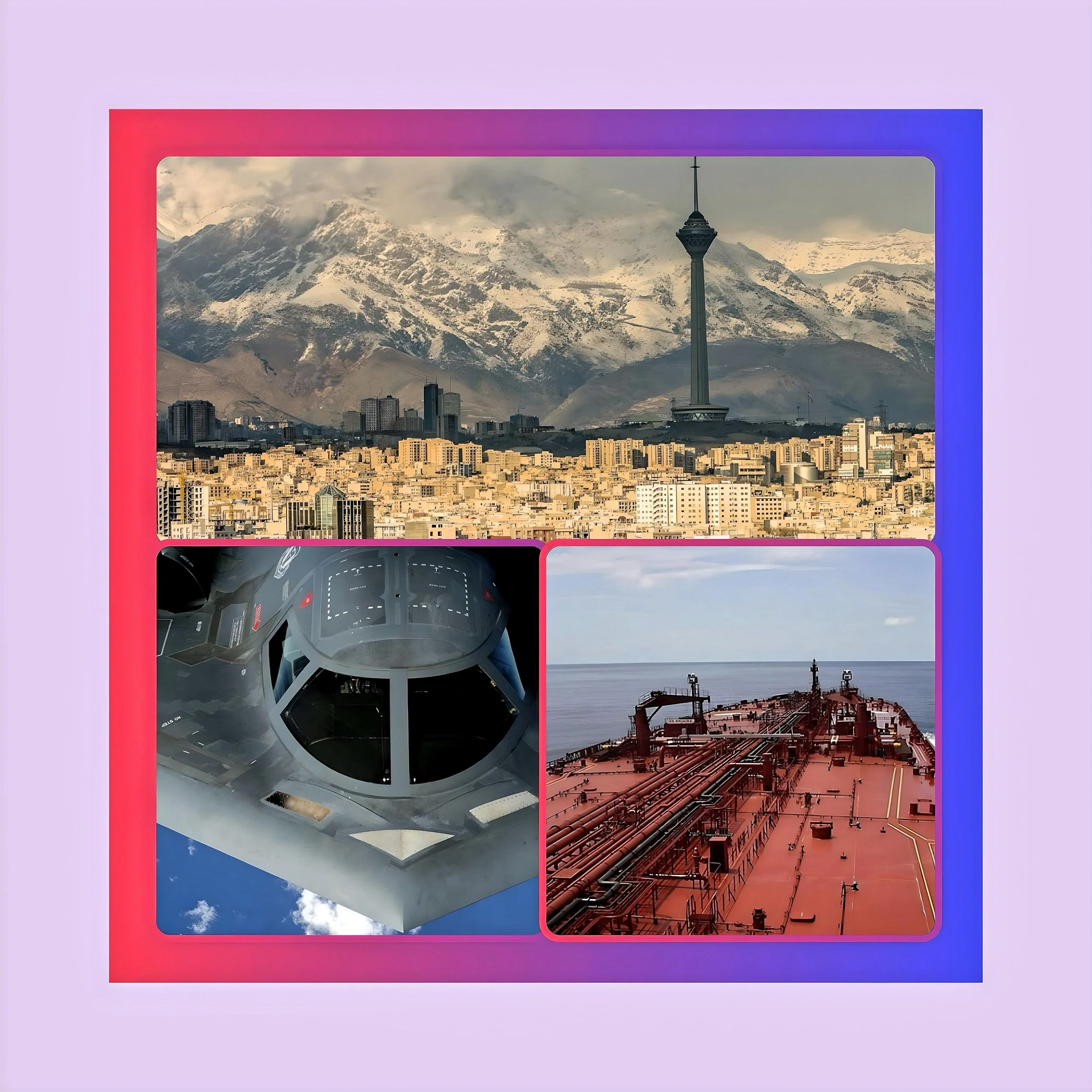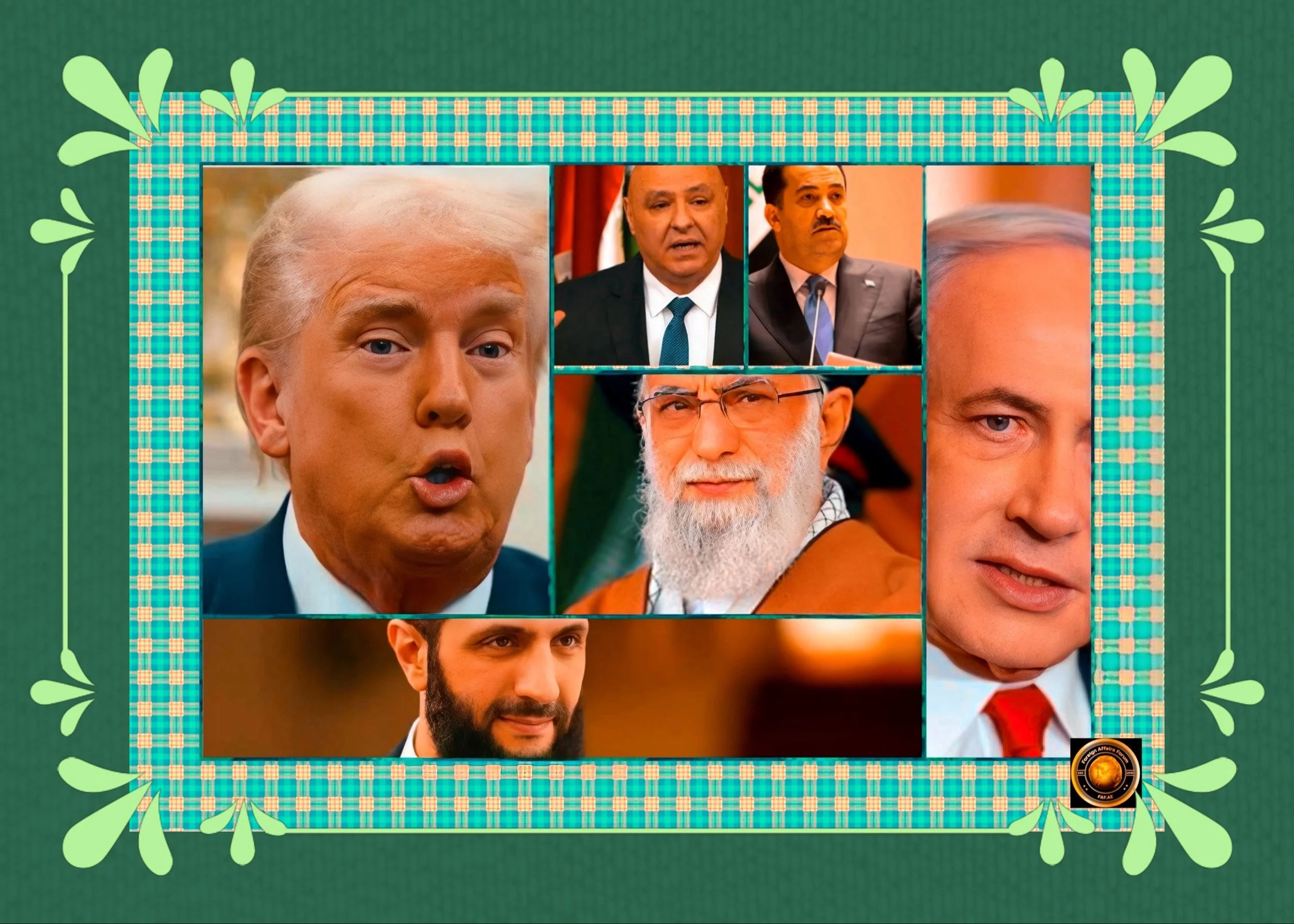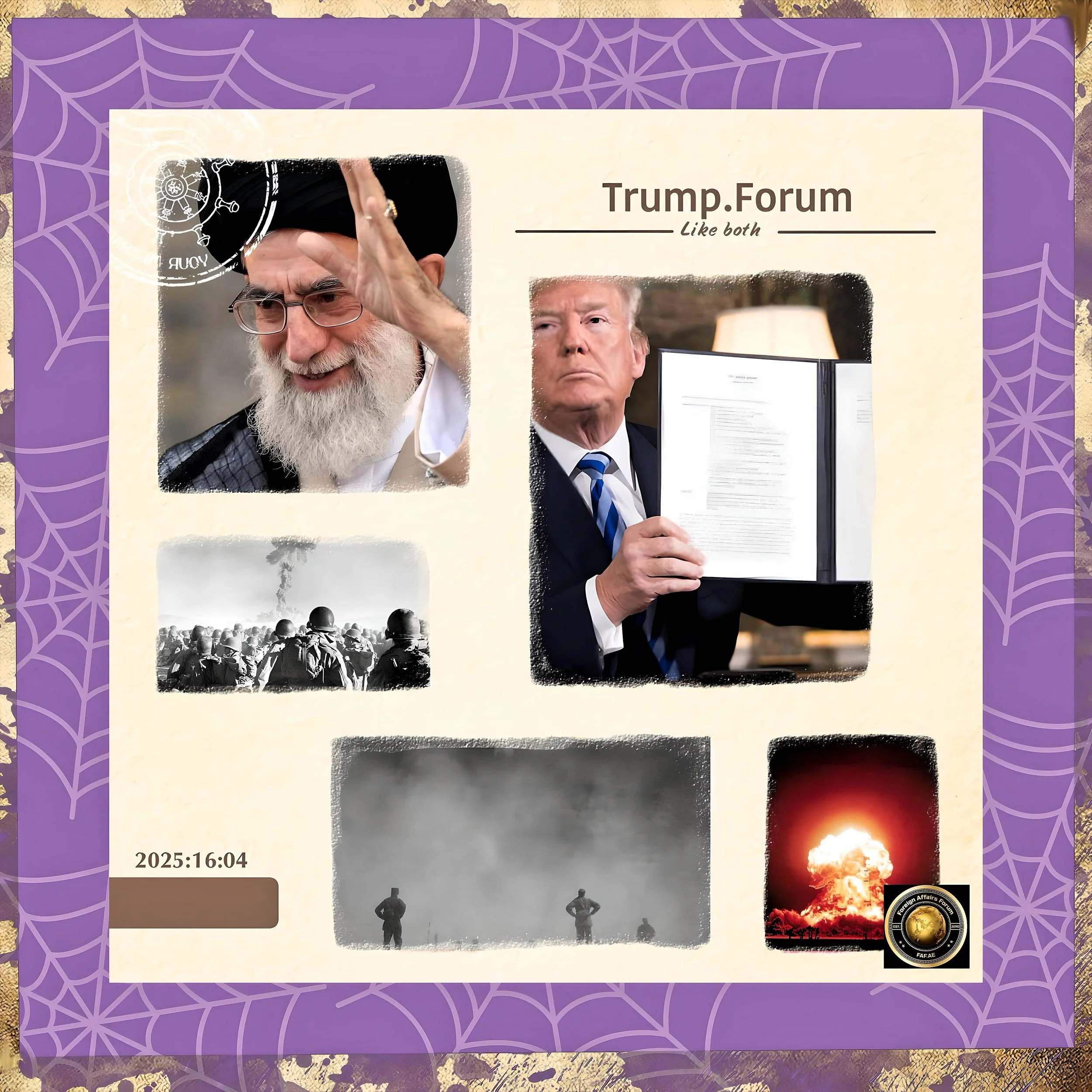Trump’s Letter to Iran: UAE Diplomat Delivers Presidential Message Amid Nuclear Tensions
Introduction
The diplomatic channels between the United States and Iran have been reactivated in a significant development that has captured international attention.
On March 12, 2025, a high-ranking Emirati diplomat delivered a letter from US President Donald Trump to Iran’s leadership, marking a potential turning point in the contentious relationship between Washington and Tehran.
This diplomatic exchange comes amid escalating concerns over Iran’s advancing nuclear program. It represents the first direct communication between Trump and Iran’s Supreme Leader, Ayatollah Ali Khamenei since the American president returned to the White House.
The letter, carried by Anwar Gargash, diplomatic adviser to the UAE president, has reignited discussions about the future of nuclear negotiations and the possibility of averting military confrontation in one of the world’s most volatile regions.
The Presidential Correspondence and Its Delivery
President Donald Trump revealed last week that he had sent a letter to Iran’s Supreme Leader, Ayatollah Ali Khamenei, seeking to negotiate a new deal regarding Tehran’s rapidly advancing nuclear program.
This disclosure came during an interview with Fox Business that aired on March 7, with Trump explicitly stating his preference for diplomatic engagement over military intervention. “I’ve written them a letter saying, ‘I hope you’re going to negotiate because if we have to go in militarily, it’s going to be a terrible thing,’”
Trump said during the interview. Subsequently, the White House confirmed that Trump’s letter was intended to pursue negotiations for a nuclear deal.
The letter’s delivery mechanism proved a fascinating example of regional diplomacy at work.
Rather than utilizing traditional diplomatic channels between Washington and Tehran, which have been severely limited since the 1979 Islamic Revolution, Trump opted to employ the services of a trusted regional ally. Iranian Foreign Ministry spokesperson Esmail Baqaei confirmed on March 12 that Anwar Gargash, the diplomatic adviser to the president of the United Arab Emirates, had delivered the letter to Iranian officials.
This confirmation came after Iranian Foreign Minister Abbas Araghchi had previously indicated that “an Arab country” would soon deliver Trump’s letter to Iran’s clerical establishment.
The UAE’s involvement as an intermediary is particularly noteworthy, as it maintains diplomatic relations with the United States and Iran.
Despite past tensions between Abu Dhabi and Tehran, business and trade links have remained strong, with Dubai serving as a key commercial hub for Iran for more than a century.
This unique position enables the UAE to be a diplomatic bridge between the two adversaries, especially when direct engagement is challenging.
Iran’s Response: Rejection Amid Defiance
The Iranian leadership’s reaction to Trump’s overture has been decidedly cold and dismissive.
Even before the letter was officially delivered, Supreme Leader Ayatollah Ali Khamenei had preemptively rejected the notion of negotiations under pressure.
During a Ramadan speech on March 8, Khamenei declared that Tehran would not negotiate with “bullying governments” and stated, “Such negotiations aren’t aimed at solving issues. They aim to exert their dominance and impose what they want”.
Iranian President Masoud Pezeshkian escalated the rhetoric, adopting a more confrontational tone. “It is unacceptable for us that they (the US) give orders and make threats. I won’t even negotiate with you.
Do whatever the hell you want,” state media quoted Pezeshkian. This forceful rejection suggests that Iran’s leadership sees Trump’s approach as coercive rather than conciliatory and remains unwilling to enter negotiations while perceiving threats from Washington.
The formal delivery of the letter coincided with a closed-door UN Security Council meeting on Iran’s nuclear program, a session that Araghchi characterized as a “new and bizarre process that puts into question the goodwill of states requesting it.”
The meeting was requested by six of the council’s 15 members—France, Greece, Panama, South Korea, Britain, and the United States—over concerns regarding Iran’s expanding stockpile of uranium enriched to levels approaching weapons-grade.
This timing likely reinforced Tehran’s perception that international pressure was being coordinated against it, further hardening its position against negotiations.
The Nuclear Context: Escalating Tensions and Technical Advancements
The diplomatic exchange is taking place against a backdrop of increasingly alarming developments in Iran’s nuclear program. According to the International Atomic Energy Agency (IAEA), Iran has “dramatically” accelerated its enrichment of uranium to up to 60 percent purity, approaching the roughly 90 percent weapons-grade level.
This acceleration began after Trump withdrew the United States from the 2015 Joint Comprehensive Plan of Action (JCPOA) during his first term and reimposed crippling sanctions on Iran’s economy.
The 2015 nuclear deal, negotiated during the Obama administration, had imposed restrictions on Iran’s uranium enrichment in exchange for sanctions relief.
After the U.S. withdrawal in 2018, Iran initially continued to comply with the agreement for over a year. Subsequently, it began gradually reducing its commitments, citing the failure of the remaining signatories to protect its interests.
The result has been a steady expansion of Iran’s nuclear capabilities, with U.S. intelligence agencies now assessing that Iran has “undertaken activities that better position it to produce a nuclear device if it chooses to do so.”
Iran has consistently maintained that its nuclear program is for peaceful purposes, even as tensions with the United States and Israel have escalated.
However, the technical advancements in Iran’s program have raised serious concerns internationally.
Trump’s administration has repeatedly stated that Iran must be prevented from acquiring nuclear weapons, a position that aligns with longstanding U.S. policy across administrations. The letter addresses this issue through diplomacy before considering more drastic options.
The UAE as Diplomatic Intermediary
The United Arab Emirates’ role in this high-stakes diplomatic exchange deserves particular attention. As one of Washington’s key Middle East security partners and host to U.S. troops, the UAE maintains a delicate balance in its foreign relations.
Under the diplomatic stewardship of figures like Anwar Gargash, the UAE has positioned itself as an essential regional player capable of engaging with parties across political divides.
According to Axios, the letter was reportedly given to Gargash by Trump’s Mideast envoy, Steve Witkoff, who was in Abu Dhabi on March 11.
This handover represents a complex chain of custody for this sensitive diplomatic communication, highlighting the intricate networks that operate in Middle Eastern diplomacy.
Gargash’s subsequent meeting with Iranian Foreign Minister Abbas Araghchi in Tehran culminated this diplomatic relay.
This is not the first time a third party has attempted to facilitate communication between the U.S. and Iran.
In 2019, during Trump’s first term, he tried to send a letter to Khamenei through the late Japanese Prime Minister Shinzo Abe.
That attempt was notably unsuccessful, and the supreme leader mocked it. Footage widely shared by Iranian state media showed Abe slipping the envelope back under his leg during their meeting.
The choice of the UAE as an intermediary reflects both pragmatic and strategic considerations.
The Emirates’ geographical proximity to Iran, historical trade relations, and diplomatic connections make it a logical choice for such sensitive communications.
Additionally, the UAE’s concerns about Iran’s nuclear program align with those of the United States, giving it a stake in facilitating a potential diplomatic resolution.
Historical Context and Future Implications
Significant policy shifts have characterized Trump’s approach to Iran. During his first term, he unilaterally withdrew from the 2015 nuclear deal and implemented a “maximum pressure” campaign designed to isolate Iran economically and reduce its oil exports to near zero.
This strategy included the dramatic escalation of ordering the drone strike that killed Iran’s top general, Qassem Soleimani, in Baghdad in January 2020.
The current overture resembles Trump’s approach to North Korea during his first term when he wrote letters to leader Kim Jong Un.
Those exchanges led to face-to-face meetings but ultimately failed to produce substantive agreements limiting Pyongyang’s nuclear weapons and missile programs. The parallel raises questions about whether this new attempt at letter diplomacy with Iran will yield different results.
Iran’s economic situation might influence its calculations regarding potential negotiations. The country continues to struggle with severe financial problems exacerbated by U.S. and Western sanctions.
The Iranian currency, the rial, has dramatically fallen in value, while unemployment and underemployment remain widespread.
These economic pressures, combined with internal social unrest following the death of Mahsa Amini in 2022, have placed the Iranian regime in what some analysts consider one of the most precarious positions the theocracy has faced since the 1979 Islamic Revolution.
International Reactions and Diplomatic Momentum
The international community has expressed cautious optimism about Trump’s diplomatic initiative.
The United Nations welcomed Trump’s outreach to Iran, with spokesman Stephane Dujarric stating, “As a matter of principle, we reaffirm that diplomacy remains the best way to ensure the peaceful nature of Iran’s nuclear program. In that regard, we welcome all diplomatic efforts towards that goal”.
Meanwhile, Russia has offered to mediate between the United States and Iran, and its deputy foreign minister is holding talks with the Iranian Ambassador.
China also remains engaged as a party to the original nuclear agreement. Araghchi has confirmed that Iran will participate in a meeting in Beijing on Friday with Russia and China and will also hold a fifth round of talks with the European powers that were part of the nuclear deal—France, Britain, and Germany.
These diplomatic movements suggest that despite Iran’s initial rejection of Trump’s overture, there remains significant international interest in finding a negotiated solution to the nuclear standoff.
Whether these efforts will lead to substantive discussions remains uncertain, particularly given Washington's and Tehran's seemingly entrenched positions.
Conclusion
President Trump’s letter to Iran, delivered through Emirati diplomatic channels, represents a significant moment in the ongoing saga of U.S.-Iran relations.
While Tehran's immediate response has been dismissive, the very fact that such communication is occurring through established regional diplomatic networks indicates that pathways for dialogue, however tenuous, remain open.
The involvement of the UAE as an intermediary highlights the complex web of relationships in the Middle East and the potential for regional actors to play constructive roles in de-escalating tensions.
The nuclear issue remains at the heart of U.S.-Iran tensions, with technical developments continuing to raise the stakes.
As Iran’s uranium enrichment approaches weapons-grade levels and the United States maintains its position that a nuclear-armed Iran is unacceptable, the risk of military confrontation looms.
Whether Trump’s letter represents a genuine opportunity for diplomatic engagement or merely a prelude to more confrontational measures will likely become more apparent in the coming weeks and months.
What is certain is that this diplomatic exchange has once again placed the Iran nuclear issue at the center of international attention, with significant implications for regional security, global non-proliferation efforts, and the future trajectory of relations between Washington and Tehran.
The ball now appears to be in Iran’s court, though it remains highly questionable whether its leadership will see sufficient incentive to engage, given its current public stance.






